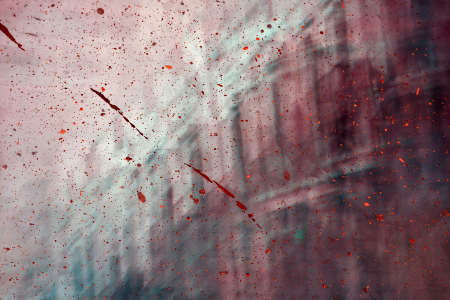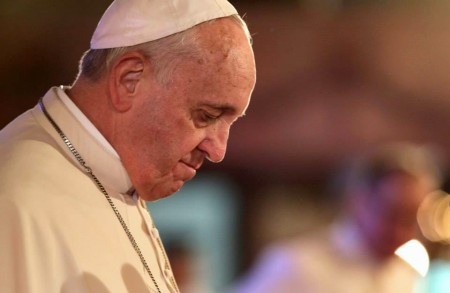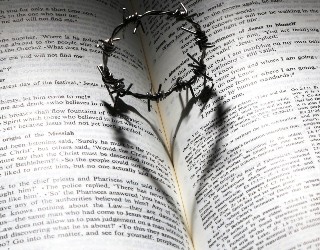We ask you, humbly: don't scroll away.
Hi readers, it seems you use Catholic Online a lot; that's great! It's a little awkward to ask, but we need your help. If you have already donated, we sincerely thank you. We're not salespeople, but we depend on donations averaging $14.76 and fewer than 1% of readers give. If you donate just $5.00, the price of your coffee, Catholic Online School could keep thriving. Thank you.Help Now >
Benedict and Beauty: Pope Calls for the Flourishing of the Arts
FREE Catholic Classes
This emphasis on beauty is a core teaching of Pope Benedict XVI. It is a profoundly important part of the Catholic vision of reality. Beauty is a path to God who is the source of all beauty.
Highlights
Catholic Online (https://www.catholic.org)
11/29/2012 (1 decade ago)
Published in Europe
Keywords: beauty, arts, theatre, music, artists, Letter to Artists, painting, beauty as path to God, Pope benedict XVI, Blessed John Paul II, Deacon Keith Fournier
P>VATICAN CITY (Catholic Online) - On Wednesday, November 21, 2012, the Pontifical Academies held their seventeenth public session on the theme "The Artist, like the Church, is a witness to the beauty of faith". At the session, Cardinal Tarcisio Bertone S.D.B read a message from Pope Benedict XVI.
The Pope expressed, "the desire of the Church to rediscover the joy of common reflection and concerted action, with the aim of restoring the theme of beauty as the focus of attention within ecclesial communities, civil society and the world of culture".
Benedict XVI often addresses beauty as a path to God. In a General Audience held on Wednesday, August 31, 2011 in Castel Gandolfo, he reminded 5,000 pilgrims of the universal human response to beauty as reflected in a sculpture, a painting, a poem or a beautiful piece of music.
The Pope said it is "something bigger, something that speaks, capable touching the heart, of communicating a message, of elevating the soul. How many times, then, can artistic expressions be occasions to remind us of God, to help our prayer or the conversion of the heart."
The Pope said that works of art "open the door to the infinite, to a beauty and a truth that goes beyond the ordinary. A work of art can open the eyes of the mind and heart. Perhaps sometimes, before a sculpture, a painting, a few verses of a poem or a song, you have experienced deep within an intimate emotion, a sense of joy, that is to have clearly perceived that in front of you there was not only matter, a piece of marble or bronze, a painted canvas, a series of letters or a combination of sounds, but something bigger, something that speaks, capable of touching the heart, of communicating a message; elevating the soul.
"The work of art is the fruit of human creativity, which questions the visible reality, trying to discover its deep meaning and to communicate it through the language of shapes, colors, sounds. (It) is an open door on the infinite (which) opens the eyes of the mind, of the heart. One example of this is when we visit a Gothic cathedral; we are enraptured by the vertical lines that shoot up towards the sky and draw our eyes and our spirits upwards, while at the same time, we feel small, and yet eager for fullness."
"Or when we enter a Romanesque church: we are spontaneously invited to recollection and prayer. We feel as if the faith of generations were enclosed in these splendid buildings. Or, when we hear a piece of sacred music that vibrates the strings of our heart, our soul expands and helped to turn to God. "
"A concert of music by Johann Sebastian Bach, in Munich, directed by Leonard Bernstein, again comes to my mind. After the last piece of music, one of the Cantate, I felt, not by reasoning, but in my heart, that what I heard had conveyed something of the faith of the great composer to me and pressed me to praise and thank the Lord ".
He asked, " how many times have paintings or frescoes, the fruit of the faith of the artist, in their forms, their colors, in their light, encouraged us to direct our thoughts to God and nourish in us the desire to draw from the source of all beauty. What a great artist, Marc Chagall, wrote remains true, that for centuries painters have dipped their paintbrush in that colored alphabet that is the Bible."
"How many times then can artistic expressions be occasions to remind us of God, to help our prayer or for the conversion of the heart! Paul Claudel, a poet, playwright, and French diplomat, in the Basilica of Notre Dame in Paris, in 1886, while he was listening to the singing of the Magnificat at Christmas Mass, felt God's presence. He had not entered the church for reasons of faith, but to in search of arguments against Christians, and instead the grace of God worked in his heart".
The Pope challenged the pilgrims "to rediscover the importance of this path for prayer, for our living relationship with God. The cities and towns all over the world preserve works of art that express the faith and remind us of our relationship with God."
"Visiting places of art, it is not only an occasion for cultural enrichment, but above all it can be a moment of grace, an encouragement to strengthen our relationship and our dialogue with the Lord, to stop and contemplate, in the transition from simple external reality to a deeper reality, the ray of beauty that strikes us, that almost wounds us in our inner selves and invites us to rise towards God."
This emphasis on beauty is a core teaching of Pope Benedict XVI. This was also true of his predecessor, Blessed John Paul II. It is a profoundly important part of the Catholic vision of reality. Beauty is a path to God who is the source of all beauty.
On November 21, 2009 Pope Benedict XVI met with 250 Artists in the Sistine Chapel. He told them they were "custodians of beauty," and asked them to be "heralds and witnesses of hope for humanity." He has continued the trajectory of his predecessor, Blessed John Paul II, reawakening within the Church a love for the Arts and a rediscovery of Beauty as a path to God.
Creation and Redemption are part of a grand masterpiece by the Divine Artist. He created the world out of love and for all who dwell upon it can become a manifestation of His Beauty. There is a connection between beauty and the Christian vocation to manifest the presence of the living God in this world which He still loves. To be fully Christian is to be fully human.
In Blessed John Paul's "Letter to Artists" he called for the creation of "epiphanies of beauty" and encouraged the flourishing of all the arts in a great renewal of humanity for our age. His letter began with these words from the Book of Genesis: "God saw all that He had made, and it was very good (Genesis 1:31)."
The relationship between the Church and the Arts has gone through seasons. In the First Christian Millennium the environment into which the nascent Christian Church was sent revealed an expression of theatre which had devolved to a sad low because human culture had become debased. The film "The Gladiator", released in 2000, captured some of the spirit of the theatre of that age. Most dramatic expressions were considered indecent and a threat to a life of virtue for the early Christians.
No longer recognizing the beauty of creation and the dignity of the human person the culture reveled in sexual debauchery. It was because of this that early Christian leaders discouraged participation in the theatre. Unfortunately, hostility between the Christian Gospel and the theatre continued into the third and fourth centuries because much theatrical presentation mocked the Christian rites and the Christian message.
However, the Christian faith proclaims that in the Incarnation of Jesus Christ the transformation of the entirety of all human experience and the entire created order has begun. The early Christian community had a wonderful sense for theatre and artistic expression.
The early Fathers understood the capacity of the Gospel to truly humanize men and women and through them replace debased "art" with true beauty. The fullness of liturgical expression and the works of art produced by the early Christians demonstrated this fact.
When we fast forward to the Second Christian millennium we find the first half of the Millennium witnessed a mature flowering of a Christian worldview with developments in art and Christian participation. Sadly, it did not last long.
In the aftermath of the so-called "Enlightenment" and the reactions to its after-effects in some segments of what has been called the Protestant reformation, another season of suspicion arose concerning Christian participation in the arts.
The theatre was again seen as suspect and discouraged in many Christian circles. It was considered to be corrupt. A sad and limited view of both man and the world created for him by God the Divine Artist ensued.
As we began the Third Millennium, a Playwright and Artist occupied the Chair of Peter. In his "Letter to Artists" John Paul set forth an ambitious call for the participation of artists in the renewal of humanity through the flourishing of a new Christian humanism. With prophetic clarity he wrote of the "artistic vocation" as one who carried it in his own heart and incarnated it in his numerous plays.
Recognizing this mixed history of the relationship between art and Christian mission John Paul wrote of the modern era: "in the modern era, alongside this Christian humanism which has continued to produce important works of culture and art, another kind of humanism, marked by the absence of God and often by opposition to God, has gradually asserted itself. Such an atmosphere has sometimes led to a separation of the world of art and the world of faith."
That kind of separation between the arts and a living faith has no place in a mature Christian worldview. It proceeds from a poor anthropology, a misunderstanding of the nature of man/woman. It represents an inadequate understanding of the scope and implications of the Incarnation of Jesus Christ.
Finally, it promotes a theology of the Church and her mission that views "the world" as a hostile environment from which the Christian and the Church must recoil rather than a palate worthy of loving transformation by those who carry on the redemptive mission of Christ the Divine Artist.
We need Catholics to respond to the call of Christ the Divine Artist and take their place in creating new "epiphanies' of beauty." Pope Benedict's words should be taken to heart by all of us.
This emphasis on Art and beauty as a path to God is a part of the New Evangelization. Both Blessed John Paul II and Pope Benedict XVI affirm that as a part of their Baptismal vocation Christians are called to flourish in all the "theatres" of the human experience. Certainly the Arts is one of them, and a vital one.
In an age mired in ugliness, materialism, and a disdain for true beauty, Christians can lead a resurgence of the arts and create new epiphanies of beauty which draw all men and women to the source of all that is beautiful, the living God.
 Hi readers, it seems you use Catholic Online a lot; that's great! It's a little awkward to ask, but we need your help. If you have already donated, we sincerely thank you. We're not salespeople, but we depend on donations averaging $14.76 and fewer than 1% of readers give. If you donate just $5.00, the price of your coffee, Catholic Online School could keep thriving. Thank you. Help Now >
Hi readers, it seems you use Catholic Online a lot; that's great! It's a little awkward to ask, but we need your help. If you have already donated, we sincerely thank you. We're not salespeople, but we depend on donations averaging $14.76 and fewer than 1% of readers give. If you donate just $5.00, the price of your coffee, Catholic Online School could keep thriving. Thank you. Help Now >
---
'Help Give every Student and Teacher FREE resources for a world-class Moral Catholic Education'
Copyright 2021 - Distributed by Catholic Online









 Daily Readings for Friday, April 19, 2024
Daily Readings for Friday, April 19, 2024 St. Alphege: Saint of the Day for Friday, April 19, 2024
St. Alphege: Saint of the Day for Friday, April 19, 2024 Stewardship Prayer: Prayer of the Day for Friday, April 19, 2024
Stewardship Prayer: Prayer of the Day for Friday, April 19, 2024

